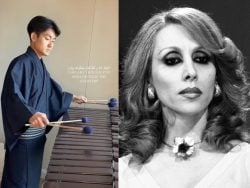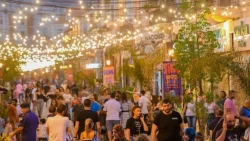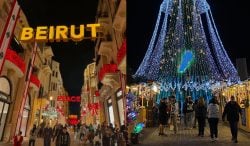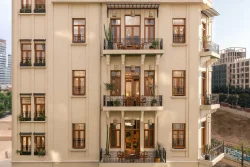Wandering Through a Labyrinth of Shock and Provocation
It is a commonly held belief in Lebanon that art is essentially correlated with beauty and aesthetic pleasure; a craft manufactured to embellish or decorate. Many Lebanese would wholeheartedly agree with British art critic and broadcaster Matthew Collings when he spoke directly to art itself and asked: “Art, why do you do it? We who have nothing, you who have everything: dignity, meaning, good looks. Why do you have to behave badly?” However, Collings only posed this question sarcastically, to set the tone for an episode of his 1999 Channel 4 documentary series This Is Modern Art which dealt with shock in art; but for some this is a genuine concern.
One Lebanese artist whose art spurs similar reactions of unease and confusion is Fatima Mortada, 35, who utilizes various techniques, including painting and embroidery, to create some rather provocative works exploring the taboo subject of the female body. She’s raised a few eyebrows in her career and did so once again this past Friday, as her first solo exhibition Labyrinth opened at the Mark Hachem Gallery.
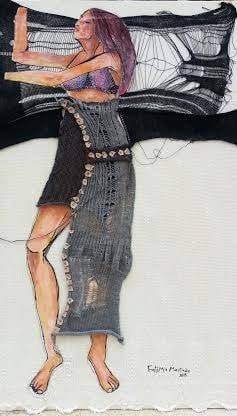
(Photo via Mark Hachem Gallery)
Mortada was born in Damascus, Syria and moved to Lebanon at the age of 2. She would later study Fine Arts at the Lebanese University in 2003, before traveling to the UK in 2009 to earn her Master’s in Fine Arts from the University of Southampton, Manchester School of Art. While studying in Lebanon, Mortada was trained with basic materials and techniques, such as oil painting, drawing with charcoal, etc. Upon moving to the UK, she felt unsatisfied with working in 2D and began experimenting with alternative techniques and mediums, such as stitching, knitting and embroidery.
After doing some research, Mortada discovered a relation between her newly adopted techniques and Feminism. She learned of the efforts of Feminist artists to move knitting from a domestic context into that of fine art and their focus on the subject of the female body. Thus, her art took on a bold new direction. For her PhD study, she chose to explore the effect of conflict in the Middle East on the visual representations of the body in contemporary Arab art. “I noticed that there is a ferocious lack of presentations of the body, especially in its sexual being,” says the artist, adding “You can find nude paintings or drawings, but I wasn’t looking at the body in that presence, I wasn’t looking at the body as an ornament to decorate houses or museums with. I was looking at the body in its everydayness, in its struggle, in its pain. I started all this from that particular point.”
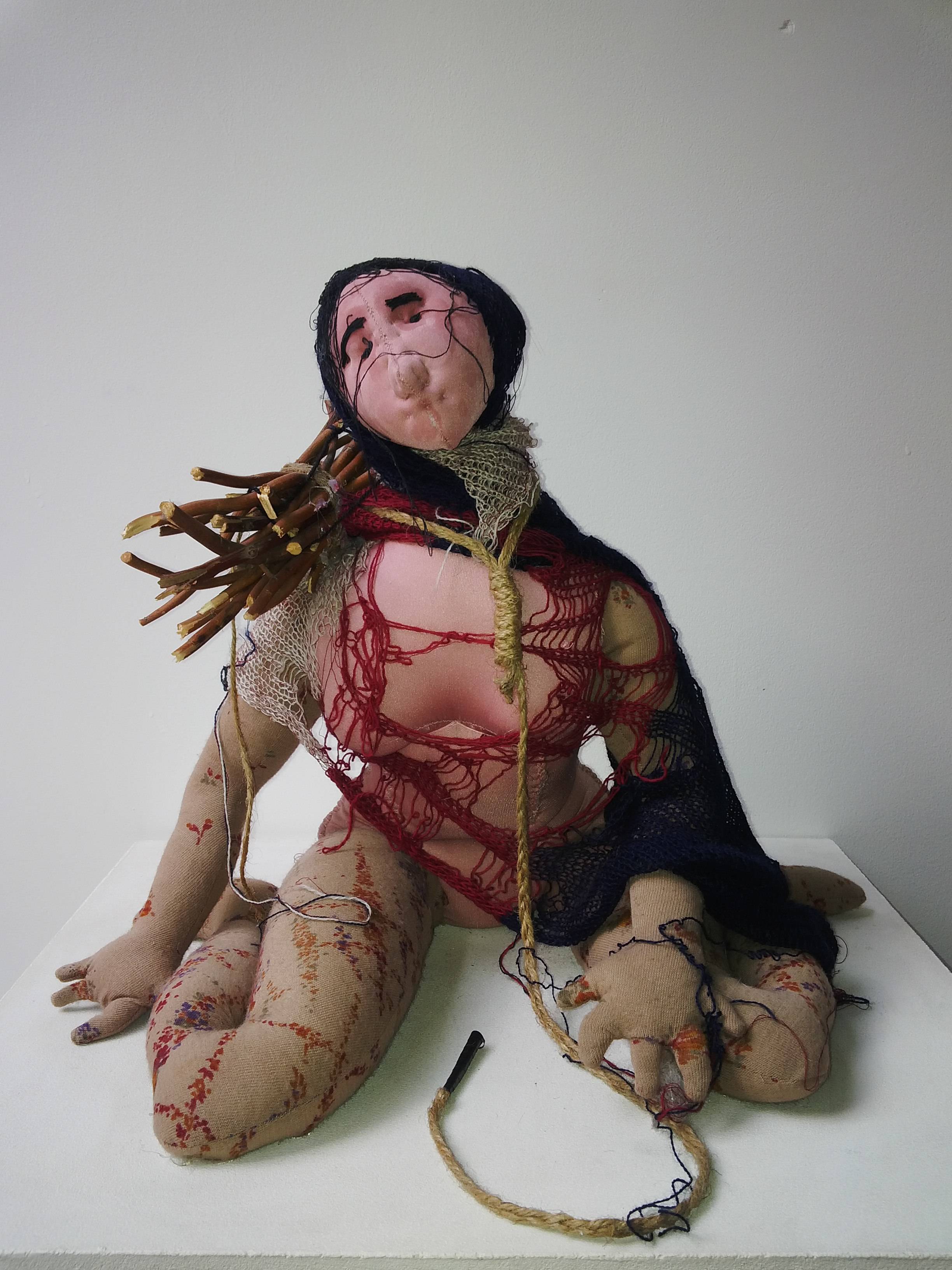
(Photo via Mark Hachem Gallery)
The works Mortada would go on to create would include erotic paintings involving drawing, painting, embroidery and stitching, with women as a predominant subject though men do appear on occasion, as well as soft sculptures of suffering females, a series of impossible dresses, designed to be impractical (ex. No opening for head, no opening for arms, etc.), videos such as Takrees, in which she is filmed nude wrapped in transparent plastic, while cutting off a wig, applying makeup and putting on a wedding veil and a performance art piece called Knit Your Text, in which she adorned herself in a bizarre costume and distributed needles to an audience at a march asking them to play with some thread she had provided.
As you would expect, Mortada’s work is not an easy pill to swallow for a somewhat conservative Lebanese society. Audiences in the West were interested in her work given her background as an Arab, and saw it as a different perspective on a familiar subject. While in Lebanon, her work has been met with some criticism and confusion. Mortada comments: “I guess my work is kind of challenging to the audience, it challenges them, it provokes them, and they don’t want to see what I’m saying”. On a 2012 episode of the program Ahmar Bel Khat El Areed, she defended the rights of woman artists going nude in public in order to make a statement. A fellow guest declared that she ought to be killed for these beliefs.
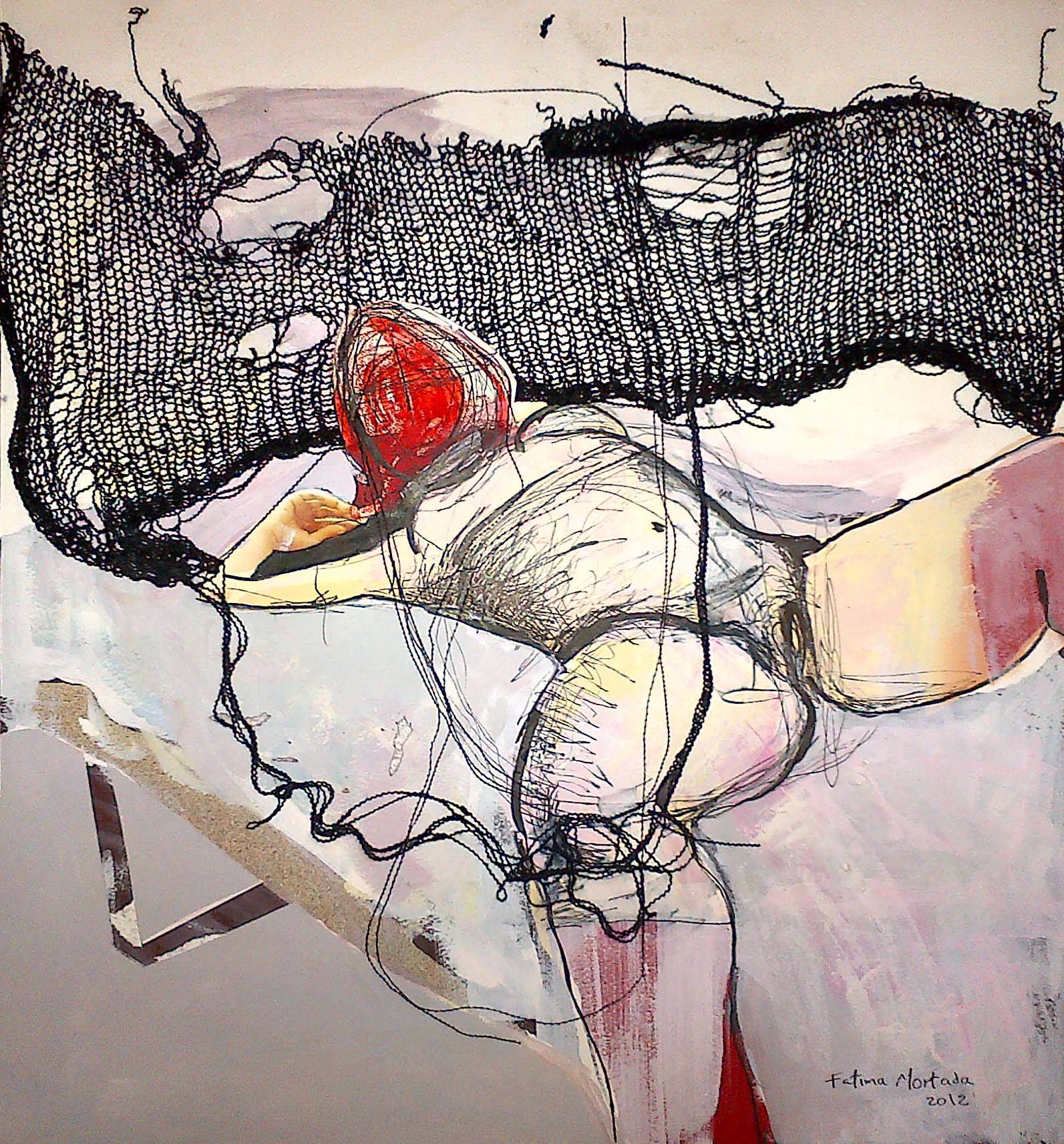
(Photo via Mark Hachem Gallery)
However, Mortada does not shock for the sake of shock alone. Her ultimate goal is to invoke curiosity and spark dialogue: “I think I shock them [Lebanese people] and that’s a positive provocation, because I make them at least wonder or ask questions”. The name of Mortada’s exhibition itself, Labyrinth, is a reflection of this and is related to the reactions people have towards her work, as she mentions in her artist statement on display: “Labyrinth points to confuse the viewer and makes him/her re-conceptualize his/her assumptions about the body.”
Her work is currently available for all to witness and enjoy, but will the message ultimately come through or end up being censored? Regardless of how her work is received locally, the artist will continue to pursue her mission in hopes that someday we may see the bigger picture: “I hope that people in the Middle East try to understand that there is something that is different from them, try to understand the other, it’s not actually the other, all of us are equal, all of us are the same, we are human beings”.
Be sure to check out Mortada’s exhibition Labyrinth which will be running at the Mark Hachem Gallery until February 20, and visit her website.
